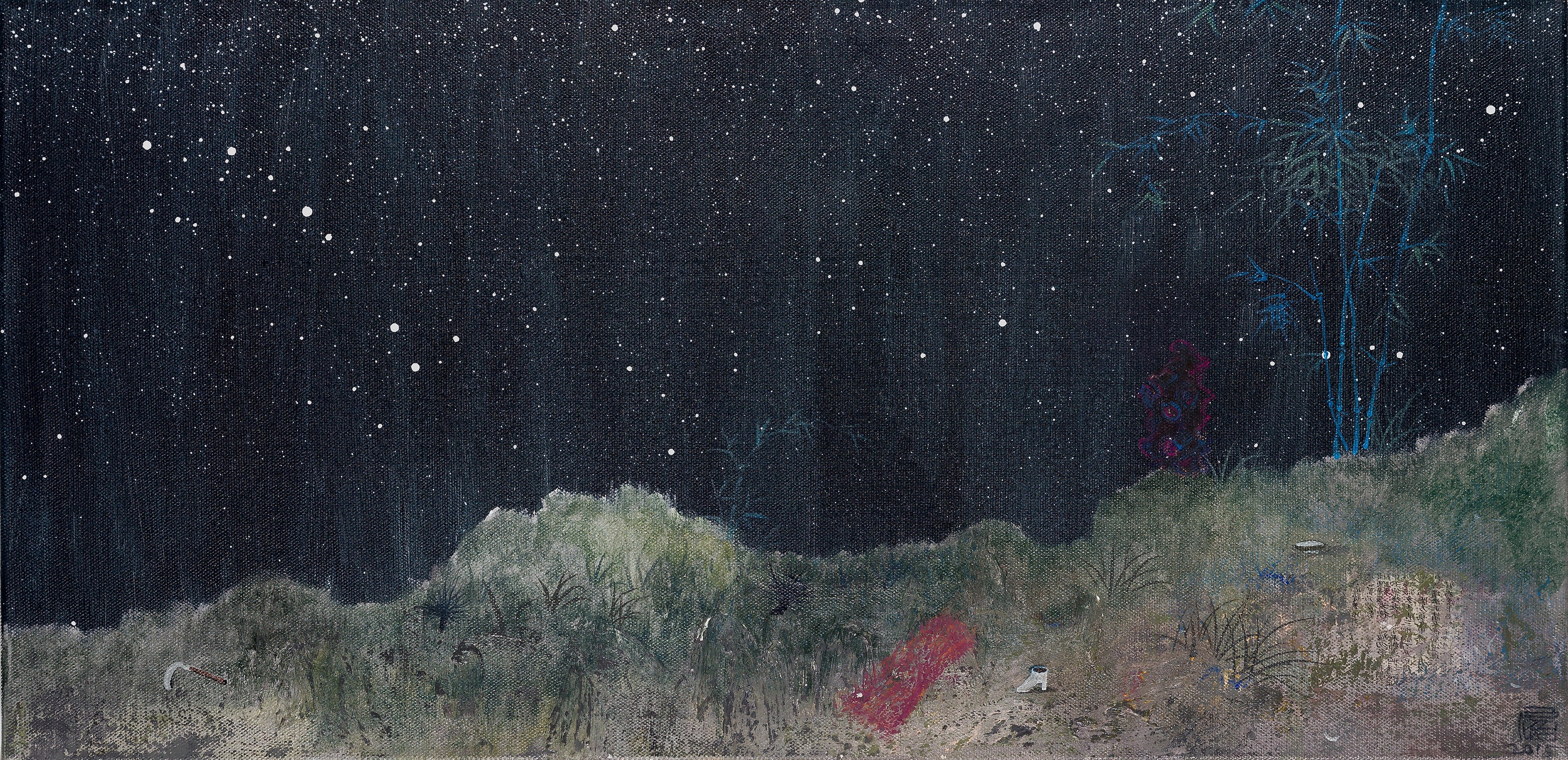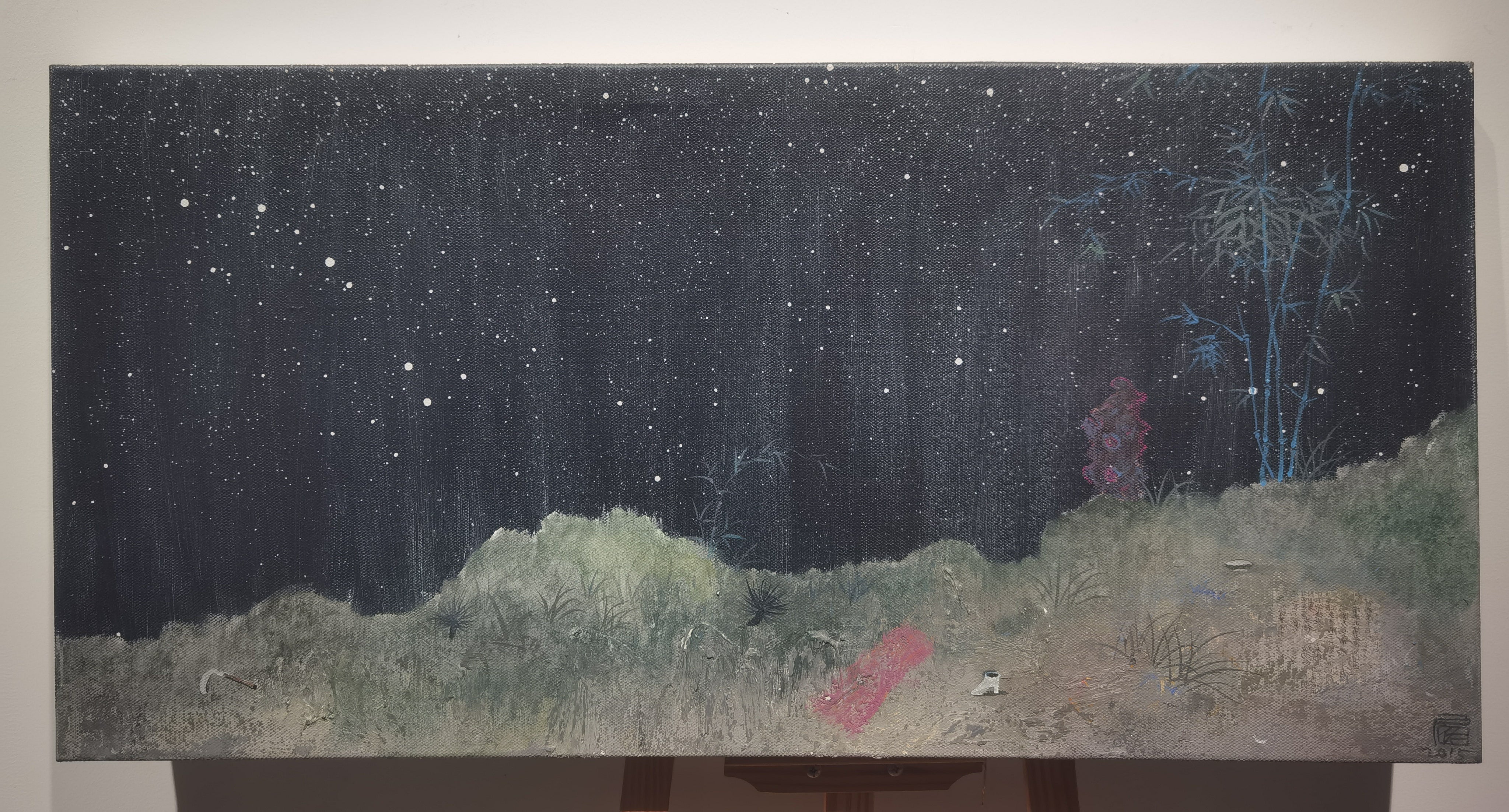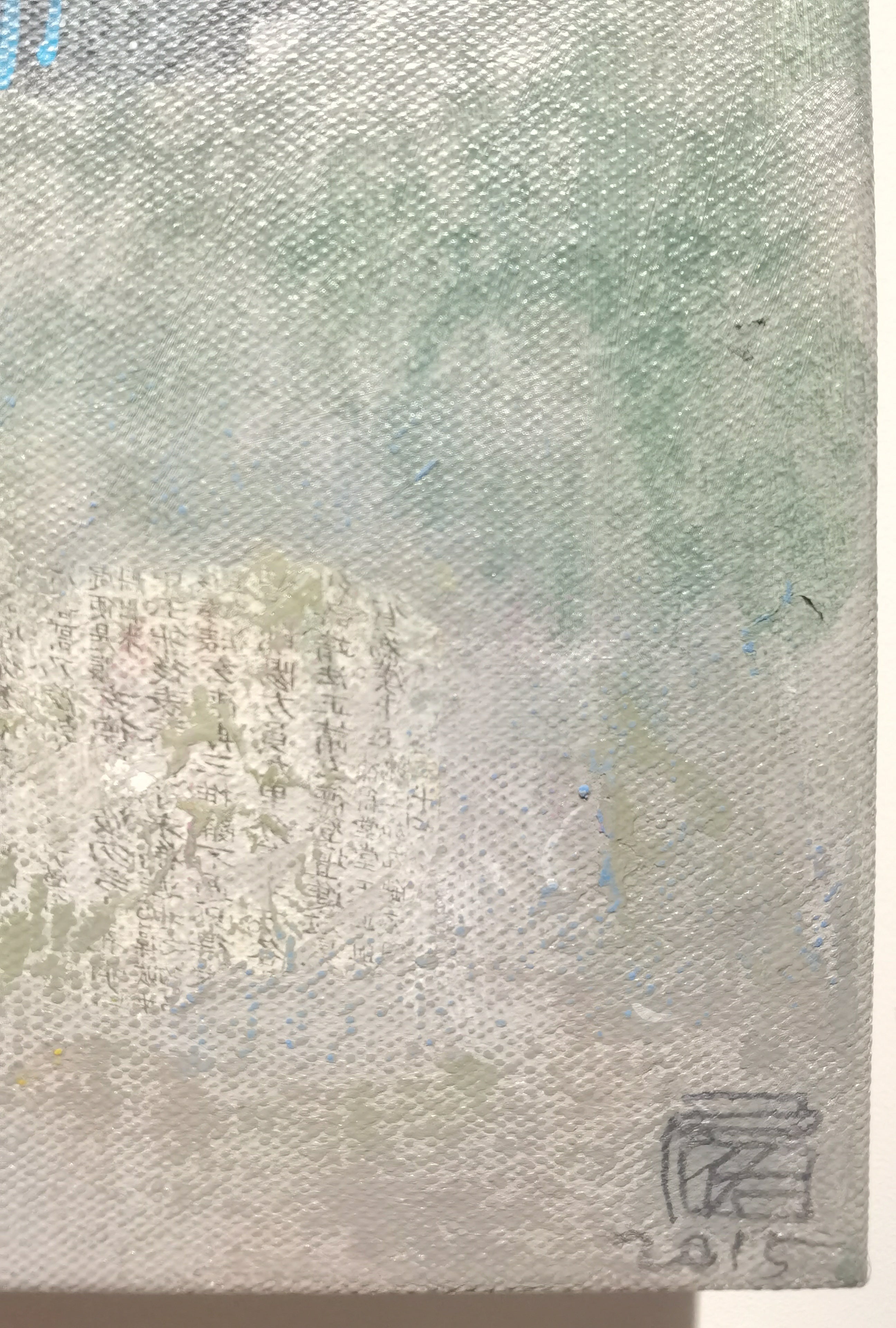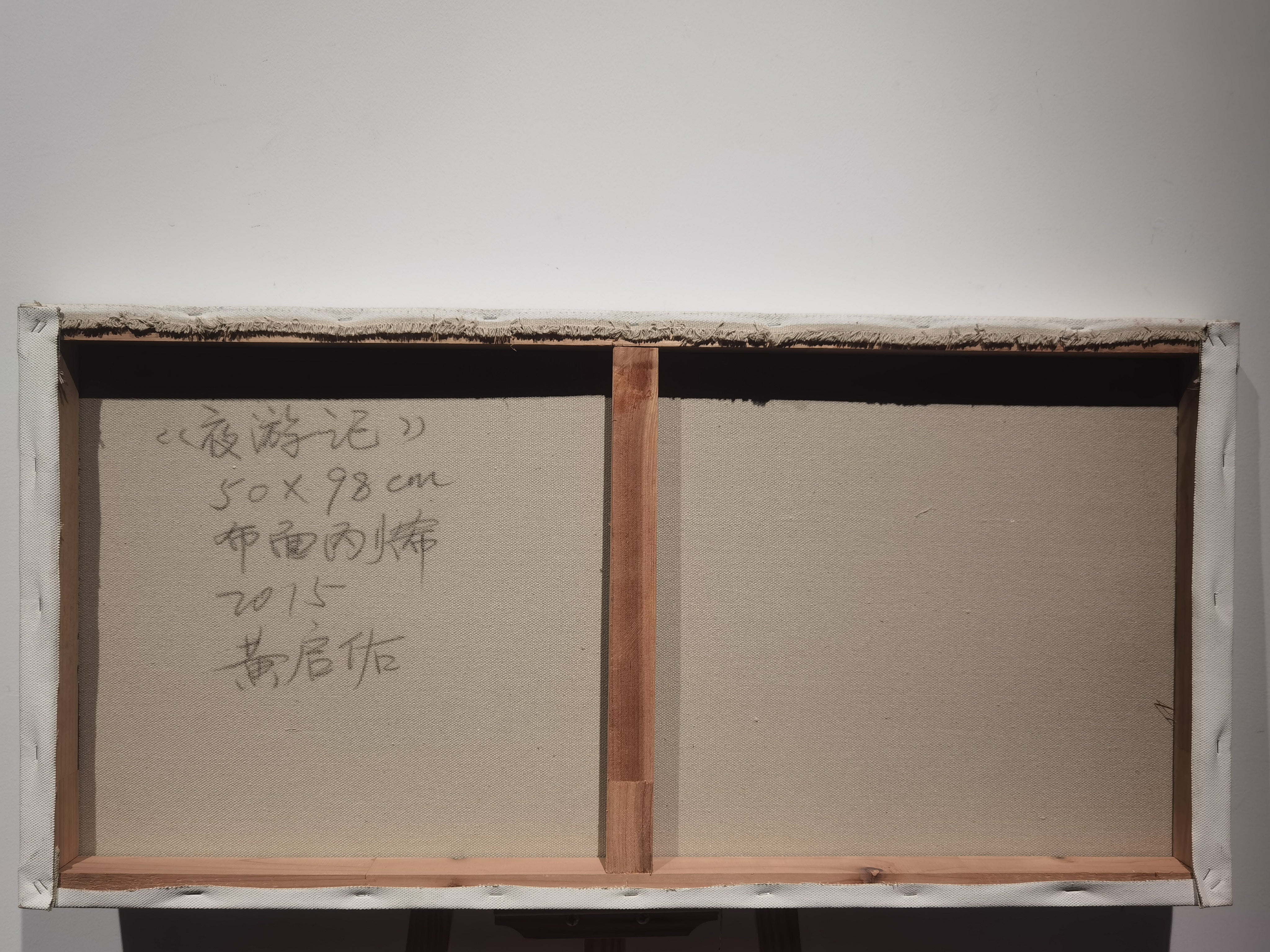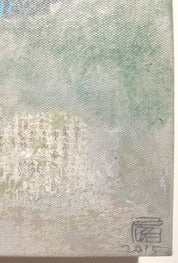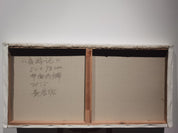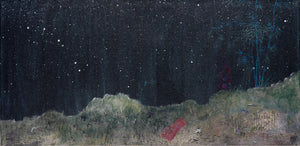Night Travels
Qiyou Huang
Artwork Details
Artwork Description
Title: Night Travels
Artist: Qiyou Huang (黄启佑)
Date: 2015
Medium: Acrylic on canvas
Dimensions: 50 x 97 cm
Artwork Identification:
Night Travels is a meditative nightscape by Qiyou Huang, featuring a starlit sky stretching above a shadowed landscape of overgrown foliage, scattered objects, and ethereal bamboo. Rendered in acrylic, the scene evokes a liminal space between dream and reality, where terrestrial remnants contrast with the infinite silence of the cosmos. The work exudes a poetic melancholy, characteristic of Huang’s introspective approach.
Artistic Style and Influences:
Huang’s visual language draws upon the expressive minimalism of traditional Chinese ink painting, infused with the existential depth of Western Romanticism. The nocturnal palette and meticulous details evoke a sense of timelessness and solitude. Symbolic elements—such as the red cloth and sparse vegetation—anchor the viewer in a contemplative realm that speaks to memory, absence, and the metaphysical passage of time.
Historical Context:
Created in 2015, Night Travels continues Huang’s inquiry into temporal and spatial displacement. His works often portray desolate landscapes that seem to echo with forgotten stories or abandoned histories. In this painting, the star-filled void becomes both a literal and metaphorical horizon, situating the viewer within a transcendent moment where the past dissolves into the unknown. The Title: suggests both physical movement and metaphysical journeying under the cover of night.
Provenance:
Provenance documentation can be provided upon contact.
Condition and Conservation:
Artwork in very good condition. The canvas and paint layers are stable, with no evident issues or restorations.
Artistic Significance:
Night Travels exemplifies Qiyou Huang’s delicate balancing of memory, space, and existential quietude. Through minimal yet poignant imagery, the work invites reflection on impermanence and the unseen narratives embedded in abandoned terrains. It stands as a luminous testament to Huang’s role in reinterpreting landscape painting for a contemporary audience attuned to fragility, transition, and introspection.

